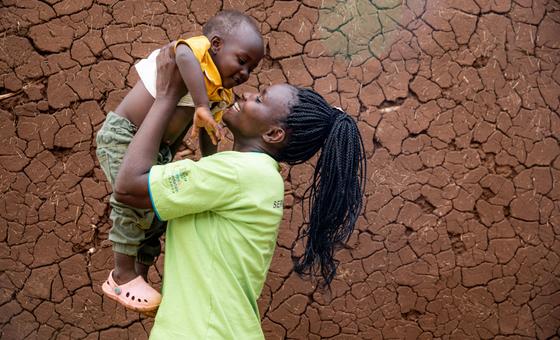World AIDS Day celebrates communities working to end the disease

[ad_1]

This year’s commemoration pays tribute to the people and organizations that have been on the frontlines of the disease – from fighting stigma and discrimination, to advocating for access to affordable interventions and community-led services.
They “have left an indelible mark on the world with their activism,” said WHO Director-General Tedros Adhanom Ghebreyesus.
Advocacy and impact
Innovations such as a once-a-day pill for HIV treatment and accessible viral load testing are just some of the results of their years of advocacy.
“The affected communities who fought for tools to prevent, test and treat HIV enabled 30 million people to access antiretroviral therapy, and helped to avert an unknowable number of infections,” said Tedros.
“We stand together with communities to help end AIDS as a public health threat by 2030.”
WHO said decades of investment and learnings from the HIV epidemic have also led to broader advancements in health at both the global and national level.
The response to HIV strengthened healthcare systems and increased access to services beyond testing and treatment for the virus, enabling, for example, swift response to many diseases including COVID-19 and mpox.
Millions going untreated
Yet despite significant progress, HIV remains a pressing public health issue, WHO said.
Globally, 9.2 million people do not have access to treatment while 1,700 people die each day from HIV-related causes. Another 3,500 are infected, many of whom do not know their status or have no access to treatment.
Furthermore, funding, criminalization and limitations affecting the roles of “community champions” impact the progress they have achieved and slow efforts to end AIDS.
Many communities – including men who have sex with men, transgender people, sex workers, people who use drugs, and adolescents – still lack access to critical prevention, treatment, and care services.
Continued funding crucial
WHO highlighted the urgent need for continued funding to HIV programmes so that community leaders can continue to reach affected persons – essential for closing gaps in diagnosing and treatment children living with the virus.
These efforts are also key for reaching global targets towards ensuring 95 per cent of people living with HIV know their status, 95 per cent of diagnosed persons receive antiretroviral treatment, and 95 per cent of those on treatment have suppressed viral loads.
Earlier this week, the UN agency working towards the goal of zero HIV infections released a report urging governments and donors to fully support grassroots communities that are leading the fight to end AIDS.
Lighting the way
Their campaigning opened up access to generic HIV medicines, thus driving down the cost of treatment from $25,000 a year per person in 1995 to less than $70 in many countries, the UNAIDS report said.
Although communities across the world have shown that they are ready, willing and able to lead, they must be properly resourced, said UNAIDS Executive Director Winnie Byanyima.
“Too often, communities are treated by decision-makers as problems to be managed, instead of being recognised and supported as leaders,” she added. “Communities are not in the way, they light the way to the end of AIDS.”
[ad_2]